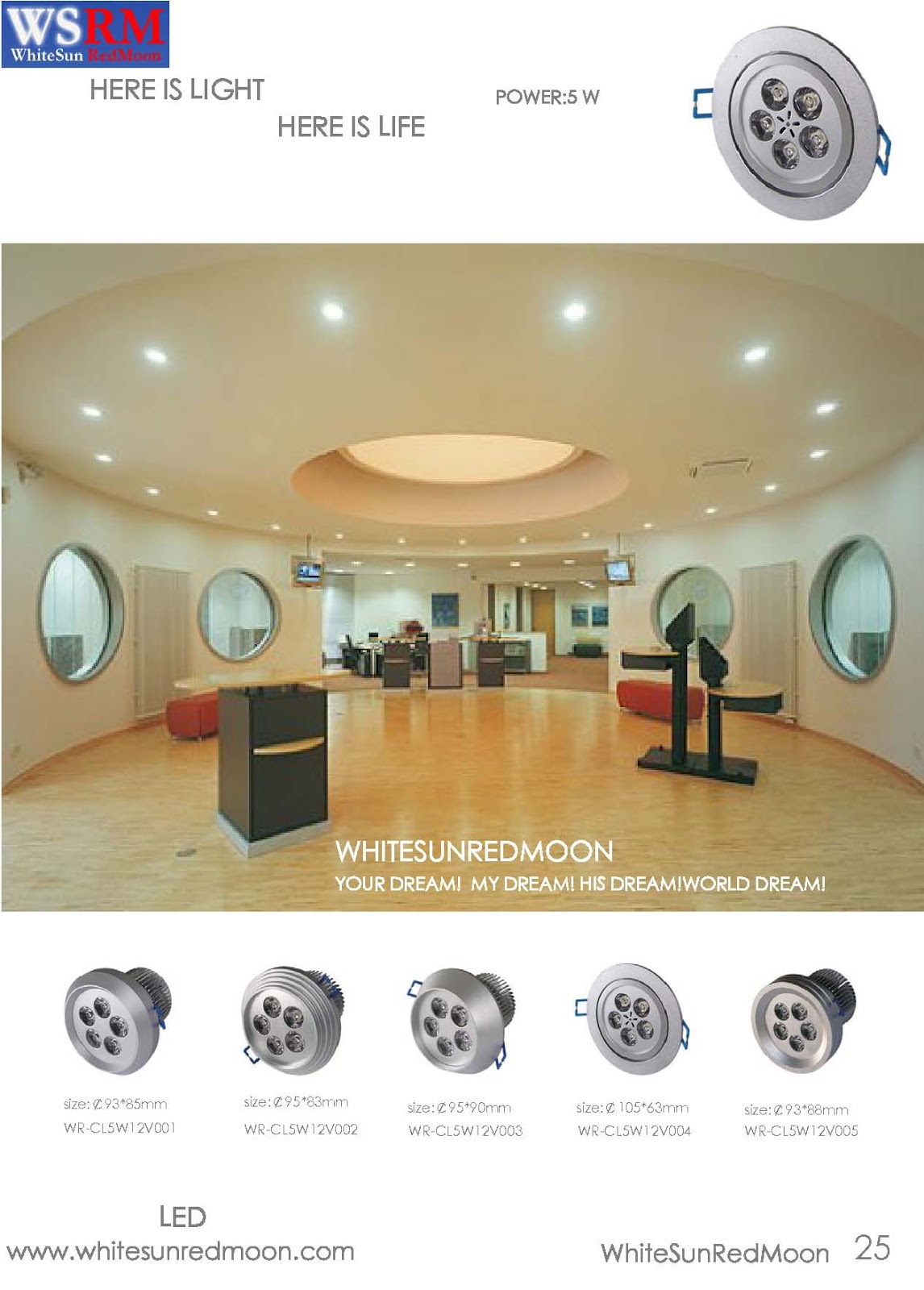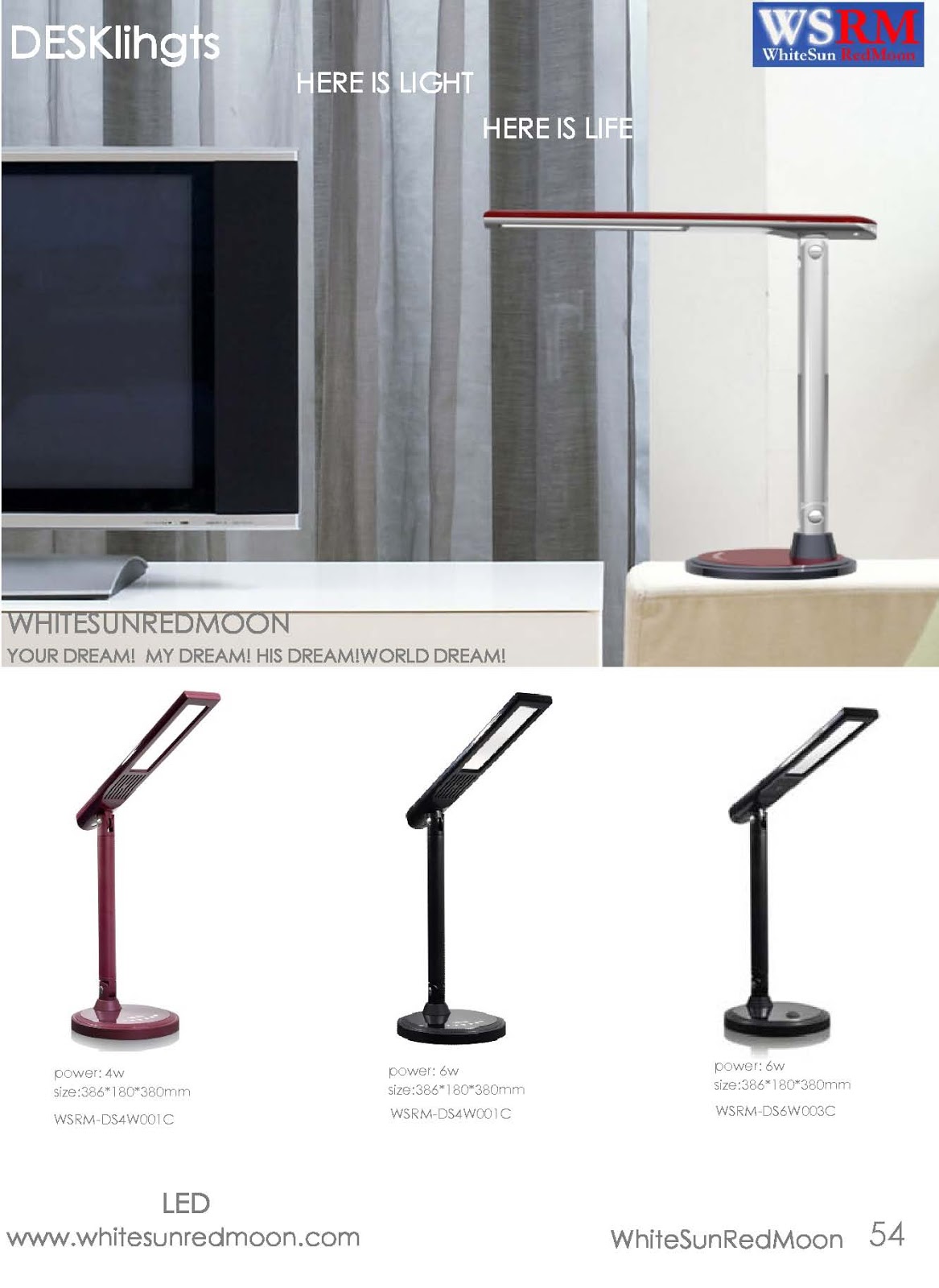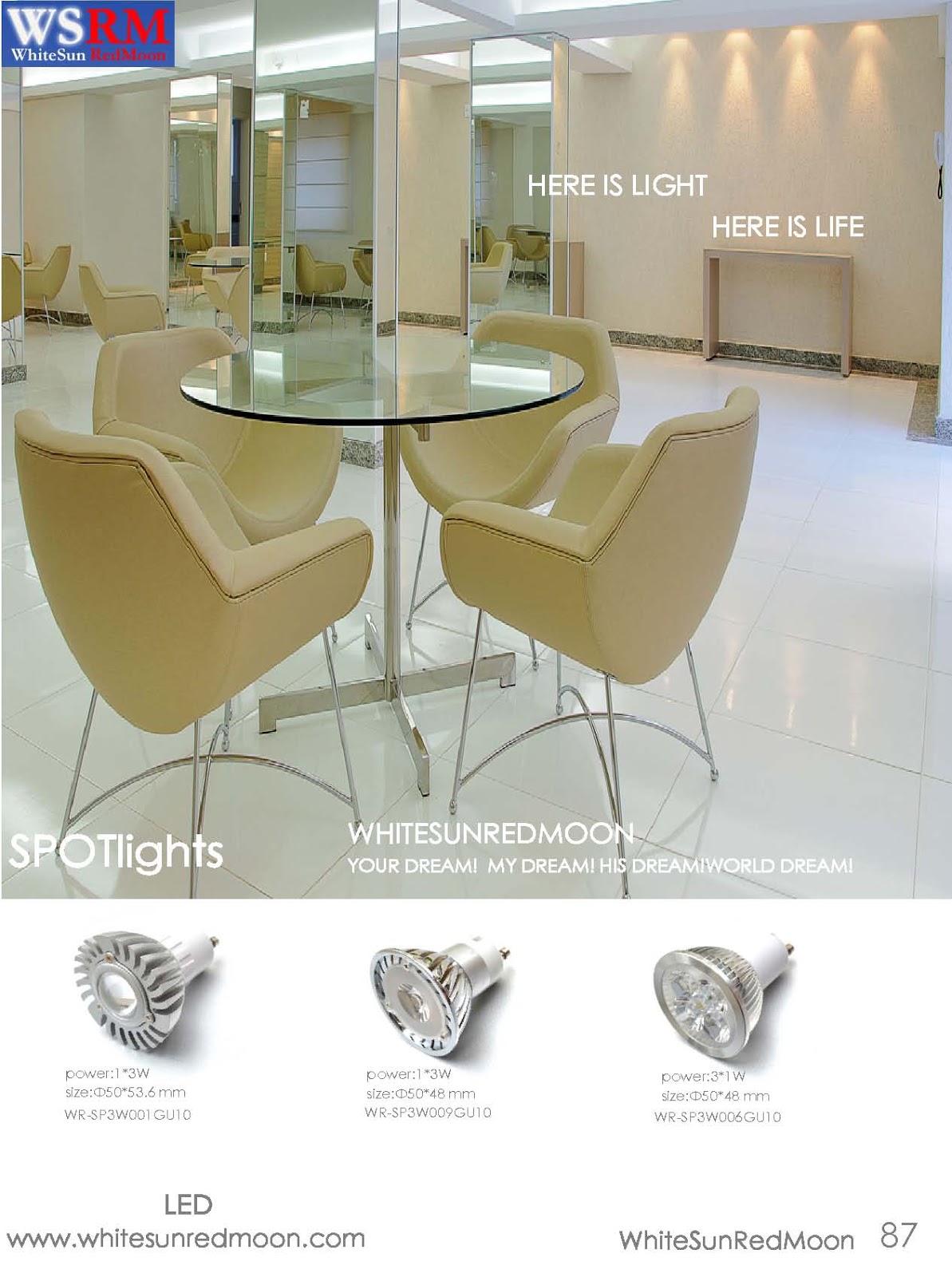HERE IS LIGHT!HERE IS LIFE!
www.whitesunredmoon.comWSRM---LEDlights Make Your Office Lighting More Energy-Efficient! |
Lighting accounts for at least 28% of the energy used in the average office building. That translates to a pretty hefty chunk of the monthly budget. But, by making big and small energy-efficient updates, you can spend less and enjoy a more comfortable office environment.
Big Changes…
LEDs use about 80% less energy to generate the same amount of light as incandescent light bulbs. They also last about 25 times longer. So, if you use incandescent light bulbs in your recessed cans, you should replace them with LED lamps or retrofits. LEDs excel at downlighting, because they’re naturally a directional light source. Today’s models have light output and color quality very similar to incandescent lights, so you might not notice the change until you look at your energy bill.
If you have older fluorescent lighting in your office (like T12s), you’re also not saving as much energy as you could. T12 technology is over 70 years old, and incidentally was taken out of production last year. If you exchange your T12s for T8s, you’ll use 45% less energy. Not to mention, the color temperature and light quality of fluorescent lights have improved dramatically over the past few decades, so new lights could be a huge morale boost for all the office workers.
Smaller Changes…
Office lighting isn’t just about what’s on the ceiling. To make sure you’re saving the most energy possible, you also need to take a critical look at the smaller light fixtures in the office.
1. Exit Signs
LED exit signs use less energy than incandescents or fluorescents. While a 40W incandescent sign costs $39 to operate each year and an 11W fluorescent sign costs $11 to run, a 2W LED only costs $2. Not to mention, the LED will last 10+ years compared to the incandescent’s 6 month and the fluorescent’s single-year rated life. The LED exit sign will pay for itself within a year.
If you want to reduce your energy load even more, you can try a photoluminescent exit sign, which uses absolutely no power to light up. The sign’s special material absorbs ambient light and emits it when the lights go out.
2. Display Lighting
Those halogen and incandescent display lights you have to showcase products or posters aren’t doing you any favors when it comes to efficiency. LED display lights match these older fixtures’ light output and quality, but blow them out of the water in terms of energy-savings. A 6W LED generates just as much light as a 50W halogen, and it lasts about 25 times longer!
Plus, LEDs operate at cooler temperatures and don’t give off any UV light – keeping any sensitive displays safe from damage.
3. Accent Lighting
Your office probably has some kind of accent lighting, like step lights in the foyer or cove lighting in the conference room. You may want to consider updating these to more efficient LED lights too. If you were to change out that old cove lighting for some new LED light bars, they would provide you with a notable 75 lumens per watt.
You can find all kinds of innovative LED lights to replace and improve upon your current lighting scheme – from stairway lighting to under counter lights to shelf lights and everything in between.
4. Sign Lighting
For lit signs and marquees outside of the office, changing out the old filament lamps for new, innovative light sources can help you save energy, reduce maintenance, and minimize waste.
A 2W LED or CCFL (cold cathode fluorescent) sign light bulb will emit the same amount of light as an 11W incandescent. They’ll also both last considerably longer than the filament lamp – the CCFL has a rated life of 25,000 hours, and the LED has a rated-life of nearly 50,000.
5. Task Lighting
Of course, an office is never complete without a proper desk lamp, or adequate task lighting over each work space. Since there are so many different varieties of desk lighting – traditional swing-arm lamps, linear task lighting, puck lights, even table lamps, the energy-efficient changes you can make really depend on your personal preference.
If you have a fixture you already like, a favorite table lamp or reading light, the easiest upgrade could be to simply change out the light bulb for an energy-saving LED or CFL. When dealing with linear lights on the other hand, it may just be easier to change out the entire fixture. Browse our wide selection of energy-efficient under cabinet task lighting to find just what you need.
6. Lighting Controls
Finally, to save even more energy and create an invigorating and convenient atmosphere at the office, upgrade your lighting controls.
For personal offices and conference rooms, use dimmers. These handy switches allow you to control the light levels in the room to keep yourself alert or relaxed. When you dim a light bulb by 25%, you’ll save 20% of the energy you’d normally use to power it, and extend your light bulb’s rated life.
For high traffic areas like kitchens, bathrooms, thoroughfares, closets, or large workrooms, you should put the lights on motion sensors. That way, the lights will come on when you need them, but they won’t stay on when no one’s around, squandering excess energy.
www.whitesunredmoon.com
http://zgledn.yglm.mobi/
SALES CONTACT
ITALY
Torino
39011redmoon1@myledonline.com
Rome
3906whitesun1@myledonline.com
SPAIN
Barcelona
3493redmoon1@myledonline.com
GERMANY
Berlin
4930whitesun1@myledonline.com
FRANCE
Paris
331redmoon1@myledonline.com
ENGLAND
London
4420whitesun1@myledonline.com
RUSSIA
Moscow
7499redmoon1@myledonline.com
FINLAND
Helsinki
3589whitesun1@myledonline.com
NORWAY
Oslo
47whitesun1@myledonline.com
AUSTRIA
Vienna
431whitesun1@myledonline.com
39011redmoon1@myledonline.com
Rome
3906whitesun1@myledonline.com
SPAIN
Barcelona
3493redmoon1@myledonline.com
GERMANY
Berlin
4930whitesun1@myledonline.com
FRANCE
Paris
331redmoon1@myledonline.com
ENGLAND
London
4420whitesun1@myledonline.com
RUSSIA
Moscow
7499redmoon1@myledonline.com
FINLAND
Helsinki
3589whitesun1@myledonline.com
NORWAY
Oslo
47whitesun1@myledonline.com
AUSTRIA
Vienna
431whitesun1@myledonline.com
NETHERLAND
Amsterdam
3120whitesun1@myledonline.com
SWITZERLAND
Zurich
4144whitesun1@myledonline.com
TURKEY
Istanbul
90216whitesun1@myledonline.com
BELGIUM
Brussels
322whitesun1@myledonline.com
SWEDEN
Stockholm
468whitesun1@myledonline.com
HUNGARY
Budapest
361whitesun1@myledonline.com
SCOTLAND
Glasgow
44141whitesun1@myledonline.com
ICELAND
Reykjavik
354whitesun1@myledonline.com
SWITZERLAND
Zurich
4144whitesun1@myledonline.com
TURKEY
Istanbul
90216whitesun1@myledonline.com
BELGIUM
Brussels
322whitesun1@myledonline.com
SWEDEN
Stockholm
468whitesun1@myledonline.com
HUNGARY
Budapest
361whitesun1@myledonline.com
SCOTLAND
Glasgow
44141whitesun1@myledonline.com
ICELAND
Reykjavik
354whitesun1@myledonline.com











No comments:
Post a Comment